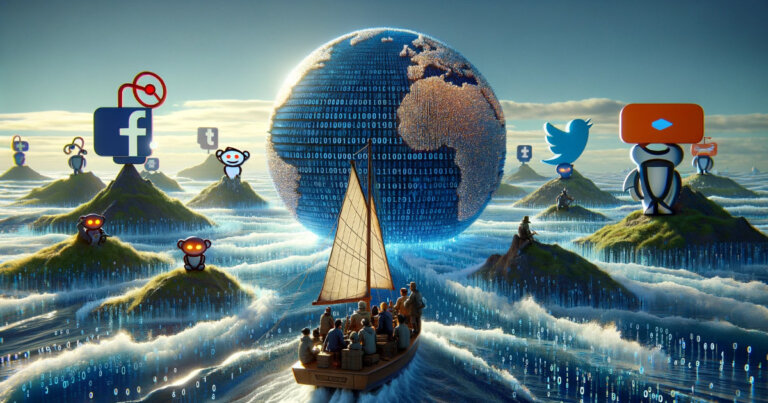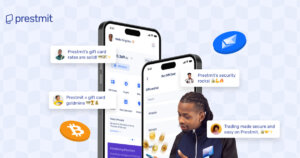 Following in the footsteps of Reddit and Twitter: Web3 loves alienating its user base
Following in the footsteps of Reddit and Twitter: Web3 loves alienating its user base Following in the footsteps of Reddit and Twitter: Web3 loves alienating its user base
Tech giants' disregard for user interests echoes in Web3 development challenges.

Cover art/illustration via CryptoSlate. Image includes combined content which may include AI-generated content.
The following is a guest post from Oleg Fomenko, the CEO of Sweatcoin.
In the rapidly evolving landscape of technology, where innovation is standard and breakthroughs are expected, one fundamental principle often gets overlooked amidst the buzz and excitement: understanding the consumer.
Tech companies, ranging from Silicon Valley giants to Web3 startups, often find themselves enamored with creating new technology, frequently at the expense of their users. Web3 companies, in particular, have a disadvantage before they even get off the ground.
The oversight of consumer desires is not just a minor misstep; it’s a critical error that determines the success or failure of a product, service, or application. This is a problem that we are seeing en masse in the Web2 world, with companies like Reddit and Twitter squandering the dedication of the user base in favor of misguided “innovation.”
Reddit, which is self-described as “a network of communities where people can dive into their interests, hobbies, and passions,” recently came under fire for their purge of third-party applications. For years, users have used various applications with differing features and user experiences to access their favorite community forums. Applications such as Apollo were highly popular due to its slick user interface and customizable features.
Earlier this year, when Reddit announced it would be banning such applications, users were irate and thousands of subreddits went dark and stopped using their forums to protest the decision made by Reddit leadership. Leadership stuck with their unpopular choice and effectively banned all third-party applications, causing a massive uproar in the community and causing the platform to catch a lot of self-inflicted heat.
The case of Twitter is even more dramatic, and the implications are more widespread. Elon Musk’s highly public, $44B takeover of one of the world’s most popular social networking sites caused tremendous drama for cultural, political, and economic reasons. Caught in the crossfire of Musk’s vision for an everything app, the American government’s desire for editorial influence, and Musk’s investors’ desire for profitability are the platform’s users.
Despite the new name not catching on, Twitter, which is technically now called “X,” is going through a crisis of identity. The changes have been aesthetic and have serious implications on how people interact with the site. Paid subscriptions for verification have replaced Twitter’s traditionally opaque process of appeal.
Publishers can offer paid subscriptions for exclusive content, but X gets a 10% cut. If users don’t cough up for the verification, their ability to use the app will be limited. Verified users can read up to 10,000 tweets per day, while unverified users can read 1,000 per day, and new unverified users can only read up to 500. These changes are stark, and they all come after a total overhaul of the company, including 80% of the workforce being laid off.
Both Twitter and Reddit are flagship applications in the global social networking industry. Despite their massive popularity, they have still managed to dramatically alienate and enrage their users by trying to fix something that was not necessarily broken, disregarding their actual users and customers in the process.
Web3 has a similar problem, although they do not quite have the same-sized user base to anger. With Web3 projects often focused on metrics such as total value locked (TVL), there has been a reliance on the targeting of whales to drive such metrics.But Whales don’t live and survive in an empty sea.
The future of Web3 is in a thriving ecosystem, driven by easy-to-use, easily accessible products that can more naturally progress users into the ecosystem. Where we see projects targeting Web3 natives, even the onboarding is often complex and requires knowledge and familiarity far beyond what is required of mass-adopted use cases in Web2.
Web3 will become a much more vibrant place when users can engage seamlessly with apps and projects without even realizing they have moved on-chain. Placing a key focus on active usership with suitable products and use cases, seamless on-ramping, and a user experience to match will drive this mass active users.
Most Web3 applications have tremendously clunky user experiences and a far too long and complex onboarding process even to get there. These new-age applications are being adopted at a glacial pace because no startup has cracked the code that is smooth onboarding, ease-of-use, and a useful and engaging application.
Web2 set a tremendously high standard for the way people interact with consumer technology that Web3 is still working toward. Despite all the advantages of Web3, including decentralized ownership, and various economic incentives, the tangible ability to access these benefits has not yet been realized. It is clear that the innovative benefits for users offered by Web3 applications are immense, and it seems inevitable that this movement will take off once some of these pressing challenges impeding their adoption are solved.
While founders and technologists work to build these new products, they must keep in mind and learn from the web revolution’s successes and failures that preceded them.



 Ro Khanna
Ro Khanna 







































































